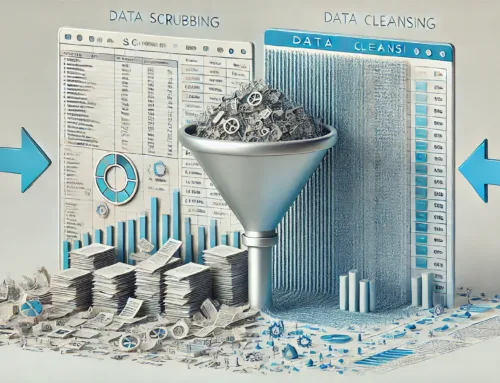When it comes to ensuring the accuracy and reliability of your datasets, following a structured approach is key. Imagine having a streamlined process that guarantees your data is clean and error-free, ready to drive informed decisions and insights. By implementing a data scrubbing process consisting of six essential steps, you can achieve just that. From conducting a thorough data audit to establishing robust error detection mechanisms, each step plays a crucial role in maintaining data integrity and enhancing overall quality. Let’s explore how these steps can revolutionize the way you handle your data.
Data Audit
Conducting a data audit is a crucial initial step in the data scrubbing process. It involves assessing the data quality and understanding its structure through data profiling. Data profiling examines the content within the dataset, identifying anomalies, inconsistencies, and missing values. By scrutinizing the data quality, you lay the foundation for effective data cleaning and enhancement.
During the data audit phase, you meticulously analyze the data to determine its accuracy, completeness, and relevance. This thorough examination allows you to identify any discrepancies or errors that need correction. Data profiling tools can assist in this process by automatically detecting patterns and outliers within the dataset.
Data Cleaning
To commence the data cleaning phase, the focus shifts towards rectifying identified discrepancies and errors within the dataset. Data validation plays a crucial role in this stage, ensuring that the information is accurate, consistent, and up to standard. By implementing validation checks, you can identify any anomalies or inconsistencies in the data that need to be addressed. This process involves examining the data for completeness, uniqueness, and conformity to defined rules or patterns.
Additionally, data standardization is key to enhancing data quality and consistency. Standardizing the format, units, and structures of the data across the dataset ensures uniformity and simplifies the analysis process. By establishing common guidelines for how data should be formatted and represented, you can avoid errors caused by variations in data presentation.
Data Integration
Efficiency in merging diverse datasets lies at the core of successful data integration. Data quality plays a crucial role in this process, ensuring that the integrated data is accurate, consistent, and reliable. Before merging datasets, it is essential to conduct thorough data transformation to standardize formats, resolve inconsistencies, and enhance overall quality.
Data transformation involves converting data into a unified structure that facilitates integration. This step may include cleaning up inconsistent values, normalizing data formats, and addressing missing or duplicate records. By standardizing the data, you can ensure that the integrated dataset is coherent and ready for analysis.
Effective data integration not only hinges on merging datasets seamlessly but also on maintaining high data quality throughout the process. By prioritizing data quality and implementing robust data transformation techniques, you can streamline the integration process and derive meaningful insights from the integrated dataset. Remember, the success of data integration heavily relies on the accuracy and reliability of the data being merged.
Data Verification
When it comes to data verification, accuracy checking methods play a crucial role in ensuring the integrity of your data. Utilizing automated verification tools can streamline the process and help identify discrepancies efficiently. By incorporating these methods into your data scrubbing process, you can enhance the overall quality and reliability of your data.
Accuracy Checking Methods
Implementing accurate accuracy checking methods is crucial in the data scrubbing process to ensure the integrity and reliability of the data being processed. Error detection plays a vital role in identifying inconsistencies, inaccuracies, and missing information within the dataset. Quality assurance procedures are essential to maintain the overall quality of the data and guarantee that it meets the desired standards.
To achieve accurate accuracy checking, it is recommended to establish predefined rules and validation criteria that the data must adhere to. These rules can include format requirements, data type validations, range checks, and consistency checks. Regular data sampling and manual reviews can also aid in identifying potential errors that automated tools might miss.
Furthermore, conducting thorough data profiling and analysis can help in understanding the data patterns and identifying anomalies that could affect the accuracy of the information. By implementing robust accuracy checking methods, you can enhance the reliability of your data and make informed decisions based on trustworthy information.
Automated Verification Tools
To streamline the accuracy checking process discussed previously, incorporating automated verification tools is paramount. These tools significantly enhance the efficiency and effectiveness of data scrubbing by automating the validation process. By utilizing automated verification tools, you can reduce the reliance on manual validation, which is time-consuming and prone to errors.
One key advantage of automated verification tools is their ability to apply machine learning techniques to analyze data patterns and identify inconsistencies or outliers. This advanced technology enables the tools to recognize discrepancies that may go unnoticed during manual validation, ensuring a more thorough and accurate scrubbing process.
Furthermore, automated verification tools can handle large volumes of data at a much faster pace than manual methods, allowing for quicker identification and resolution of data quality issues. By incorporating these tools into your data scrubbing process, you can improve the overall accuracy and reliability of your data while saving time and resources.
Data Monitoring
As you delve into the intricate process of data monitoring, your primary goal is to ensure the ongoing integrity and quality of the information within your systems. Data tracking and quality control are essential components of effective data monitoring. By continuously tracking data and performing quality control checks, you can detect errors promptly and ensure that your data remains accurate and reliable.
Error detection is a crucial aspect of data monitoring. By implementing robust error detection mechanisms, you can identify discrepancies or inconsistencies in your data promptly. This allows you to take immediate corrective actions, improving the overall quality and reliability of your data. Additionally, error detection provides valuable insights for process improvement. By analyzing the root causes of errors, you can identify areas for enhancement in your data collection, storage, and management processes.
Data Updating
When maintaining a database, the process of data updating plays a critical role in ensuring the accuracy and relevance of information. Data updating involves two key aspects: data validation and data enrichment. Data validation is the process of ensuring that the data entered into the system meets specific criteria such as format, type, and range. This step is crucial for maintaining data integrity and consistency within the database.
On the other hand, data enrichment involves enhancing the existing data by adding additional valuable information to it. This could include appending missing details, correcting errors, or standardizing data formats. Data enrichment not only improves the quality of the database but also enhances its usability for various analytical purposes.
In addition to these aspects, data updating also involves data synchronization, which ensures that all data across different systems or databases are consistent and up to date. By regularly updating and synchronizing data, organizations can make informed decisions based on accurate and reliable information.
Frequently Asked Questions
How Can Data Scrubbing Improve Data Security?
Data scrubbing enhances data security by removing redundant, inaccurate, or outdated information, reducing vulnerabilities to cyber threats. It ensures data privacy by maintaining accurate records, enhancing system efficiency, and safeguarding sensitive information from unauthorized access or breaches.
What Tools Are Recommended for Data Scrubbing?
To ensure optimal data quality and efficiency in cleaning techniques, the recommended tools for data scrubbing include automation software, deduplication tools, and data profiling software. These tools streamline processes and enhance overall data integrity.
Can Data Scrubbing Be Automated?
Yes, data scrubbing can be automated, enhancing efficiency over manual methods. While automation may incur initial costs for setup, it ultimately saves time and resources in the long run. Automated tools streamline the process and minimize human error.
What Are the Common Challenges in Data Scrubbing?
When scrubbing data, common challenges arise in maintaining data quality and accuracy. You must address issues like duplicate entries, inconsistent formats, and missing values. Ensuring clean data is crucial for reliable analysis and decision-making.
How Often Should Data Scrubbing Be Performed?
To maintain data integrity and accuracy, data scrubbing should ideally be performed on a regular basis. Best practices suggest conducting data scrubbing periodically, such as monthly or quarterly, depending on the volume and criticality of the data involved.




